
‘WE WERE SITTING DUCKS’
House Majority Whip Steve Scalise and a congressional aide were shot by a rifle-wielding gunman who sprayed a hail of bullets at a GOP baseball practice in Virginia Wednesday morning, before U.S. Capitol Police took the gunman down.
The shooter was identified as 66-year-old James T. Hodgkinson, of Illinois, the AP reported, citing a government official.

Shooter James T. Hodgkinson is Pronounced Dead at hospital
Scalise was “badly injured,” according to a tweet from President Trump, but is expected to recover. A news release from Scalise’s office said he was “stable” and undergoing surgery after being shot in the hip. Five people were “transported medically” from the scene, Alexandria Police Chief Michael Brown said. It appeared that included Scalise, Zack Barth, a congressional aide to Roger Williams, Hodgkinson and two law enforcement officers — one of whom was hit by fragments.
Sen. Rand Paul, R-Ky., told Fox News: “We were like sitting ducks.”
“Without the Capitol Hill police it would have been a massacre,” Paul said, describing the scene as “sort of a killing field.”
The gunman was shot by Capitol Police and Alexandria Police, apprehended and taken to the hospital, officials said. The incident occurred at Simpson Field in Alexandria, about 10 miles from Washington D.C. The FBI was taking over the investigation because a federal official — Scalise — was assaulted in the attack.
FBI Special Agent in Charge of the Washington Field Office Timothy Slater said it was too early to tell if the attack was terror-related.
“The vice president and I are aware of the shooting incident in Virginia and are monitoring developments closely,” President Trump said in a statement. “We are deeply saddened by this tragedy. Our thoughts and prayers are with the members of Congress, their staffs, Capitol Police, first responders and all others affected.”
Trump later tweeted: “Rep. Steve Scalise of Louisiana, a true friend and patriot, was badly injured but will fully recover. Our thoughts and prayers are with him.”
Trump was set to make a statement at 11:30 a.m. from the White House and House Speaker Paul Ryan is going to address the House at noon. Trump had spoken to Senate Majority Leader Mitch McConnell, Ryan, Scalise’s wife and chief of staff and the chief of the Capitol Hill Police.
The Department of Homeland Security was monitoring the episode.
Rep. Roger Williams, R-Tex., was seen being taken from the field on a stretcher, but he was reportedly injured while jumping into the dugout as the shots rang out. Williams’ office released a statement saying a staffer had been shot, however.
“Finally, the shooter was shot behind home plate as he was circling around to the first base dugout where there were a number of US congressmen and other folks,” Rep. Mo Brooks, R-Ala., told FMTALK1065. “Our security detail was able to incapacitate him at that point. I don’t know if he [the shooter] was dead. He was wounded. I don’t know how many times he was wounded.”
Brooks reportedly used a belt as a tourniquet to stop the bleeding of an aide who was shot in the leg.
Rep. Ron DeSantis, R-Fla., told Fox News he left just before the shooting. As he walked to his car, a man asked DeSantis if it was Republicans or Democrats practicing. About 3 minutes later, at around 7:15 a.m., the shooting began, DeSantis said. It reportedly lasted about 10 minutes.
Rep. Brad Wenstrup, R-Ohio, told Fox News he “felt like I was in Iraq, but without my weapon.”
“Behind third base, I see a rifle…I hear Steve Scalise over near 2nd base scream,” Brooks said. “…While all of this is going on, Steve Scalise our whip was lying on the ground near the second base position crawling into right field, leaving a trail of blood.”
Brooks said the gunman was using the dugout as cover and estimated the assailant got off 50-100 shots during the attack on the 15-25 people gathered at the field.
“We were there within 3 minutes,” Brown said. “Two of our officers engaged in gunfire and returned fire.”
A man walking his dog at a park near the field told Fox News he heard police yelling at the gunman to put the gun down followed by someone in or around the dugout screaming back “Just shoot him.”
Aside from Scalise, Williams, Paul, Brooks, Wenstrup and DeSantis, Sen. Jeff Flake and Reps. Mike Bishop, Jack Bergman, Chuck Fleischmann and Joe Barton were also at the field. A photographer and Bishop’s aides were present, too.
Alexandria schools were placed on lockdown as the incident unfolded. There was an uptick in the police presence around the Capitol, however, the building was still open. There was not expected to be any votes held on Wednesday in light of the shooting.
Witnesses and residents described a shattered calm Wednesday morning in a normally peaceful neighborhood now plastered with police tape.
Reba Winstead, who lives in the area, described hearing a “boom boom boom boom.” She said she was getting her daughter ready for school and then “all of a sudden there was gunfire in our neighborhood.”
Scalise, 51, is the House majority whip. He has represented Louisiana’s 1st Congressional District since 2008 and chairs the House Republican Study Committee. He is married with two children. Scalise’s district includes New Orleans.
Since he’s in leadership, Scalise has a security detail.
Scalise, who studied computer science at Louisiana State University, worked as a systems engineer before launching his political career. Scalise endorsed President Trump during last year’s presidential campaign, and has been a vocal backer of Trump’s travel ban. As leader of the powerful study group, he has also spearheaded the effort to repeal and replace ObamaCare.
The Congressional Baseball Game is scheduled for June 15 at Nationals Park. The game, which has been a tradition since 1909, pits Senate and House members of each party who sport the uniform of their home state.
Fox News’ Chad Pergram, Garrett Tenney and Barnini Chakraborty contributed to this report.

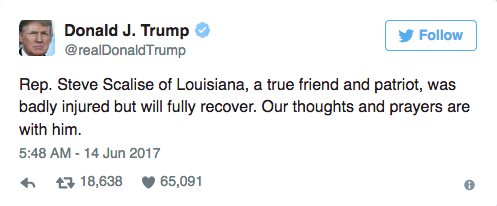


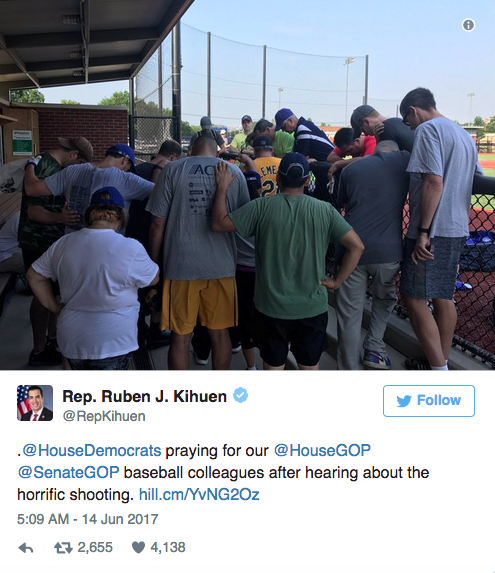



 The alleged leaker accused of feeding a classified report to an online news site has a colorful history on social media that lays bare her political leanings as an environmentalist who wanted to “resist” President Trump.
The alleged leaker accused of feeding a classified report to an online news site has a colorful history on social media that lays bare her political leanings as an environmentalist who wanted to “resist” President Trump.

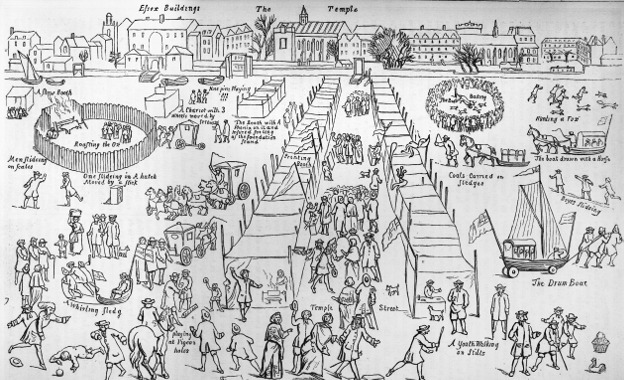
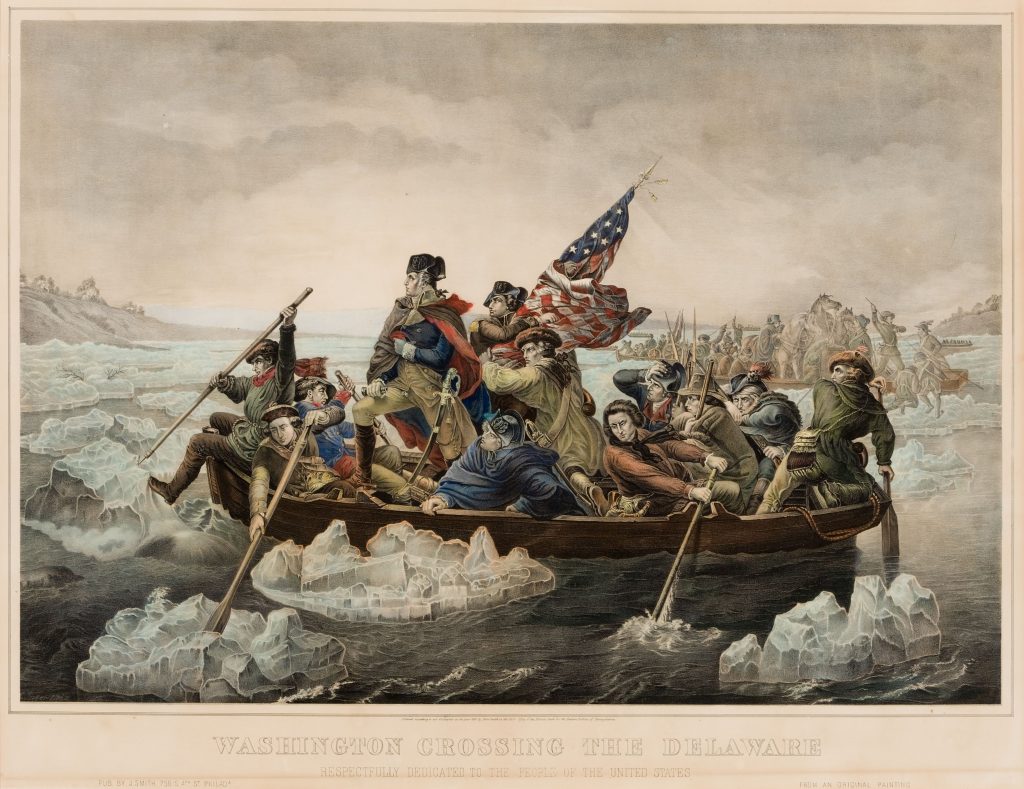
 Jared Kushner, President Donald Trump’s son-in-law and one of the senior advisers in the Trump administration, was seeking a private communications channel with the Kremlin, according to a new report in
Jared Kushner, President Donald Trump’s son-in-law and one of the senior advisers in the Trump administration, was seeking a private communications channel with the Kremlin, according to a new report in 

 The Democrats and old-guard news media (forgive the redundancy) are pathologically obsessed with the hypothesis that Team Trump and Russia rigged last November’s presidential election. If Donald J. Trump so much as played Tchaikovsky’s Marche Slav on his stereo, these leftists deduce, he was in cahoots with the Kremlin.
The Democrats and old-guard news media (forgive the redundancy) are pathologically obsessed with the hypothesis that Team Trump and Russia rigged last November’s presidential election. If Donald J. Trump so much as played Tchaikovsky’s Marche Slav on his stereo, these leftists deduce, he was in cahoots with the Kremlin.


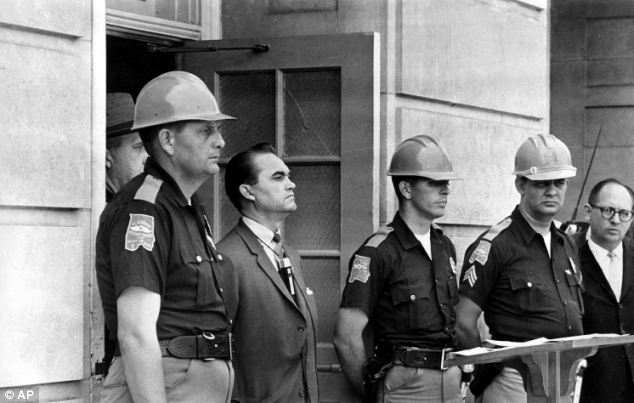
 The Obama Administration struggled through one Congressional investigation after another, with the Departments of State, Justice, Treasury, Homeland Security, and Agriculture all getting their turn on the hot seat. Interestingly, the public never really connected these scandals to Obama, instead associating Lois Lerner, Janet Napolitano, Eric Holder, Hillary Clinton, and other career bureaucrats with the various investigations. When President Obama first took office, his administration focused on placing political appointees in various government positions of influence. Performance may have suffered when someone unqualified individual took over a powerful agency, but concern for the average citizen was not on the list of priorities. In some instances, persons were appointed to certain positions for specific purposes. Leon Panetta, whose intelligence experience was limited to two years as an Intelligence Officer in the Army from 1964 to 1966, was appointed Director of the CIA in 2009. Panetta spent two years as CIA Director, which was more than enough time to conduct an internal investigation into the interrogation practices of the agency under the Bush Administration. Lerner, Napolitano, Holder, and Clinton closely followed the script, as none of the scandals involving these agencies were ever connected to Obama.
The Obama Administration struggled through one Congressional investigation after another, with the Departments of State, Justice, Treasury, Homeland Security, and Agriculture all getting their turn on the hot seat. Interestingly, the public never really connected these scandals to Obama, instead associating Lois Lerner, Janet Napolitano, Eric Holder, Hillary Clinton, and other career bureaucrats with the various investigations. When President Obama first took office, his administration focused on placing political appointees in various government positions of influence. Performance may have suffered when someone unqualified individual took over a powerful agency, but concern for the average citizen was not on the list of priorities. In some instances, persons were appointed to certain positions for specific purposes. Leon Panetta, whose intelligence experience was limited to two years as an Intelligence Officer in the Army from 1964 to 1966, was appointed Director of the CIA in 2009. Panetta spent two years as CIA Director, which was more than enough time to conduct an internal investigation into the interrogation practices of the agency under the Bush Administration. Lerner, Napolitano, Holder, and Clinton closely followed the script, as none of the scandals involving these agencies were ever connected to Obama. The family of Seth Rich, the Democratic National Committee staffer who was shot and killed in Washington last summer has denied the report that their son leaked more than 44,000 emails to WikiLeaks before his death.
The family of Seth Rich, the Democratic National Committee staffer who was shot and killed in Washington last summer has denied the report that their son leaked more than 44,000 emails to WikiLeaks before his death.
 President Trump’s seemingly abrupt decision Tuesday to fire FBI Director James Comey was made at the recommendation of top Justice Department officials who claimed that his controversial handling of the Hillary Clinton email case last year rendered him unfit for the position.
President Trump’s seemingly abrupt decision Tuesday to fire FBI Director James Comey was made at the recommendation of top Justice Department officials who claimed that his controversial handling of the Hillary Clinton email case last year rendered him unfit for the position.
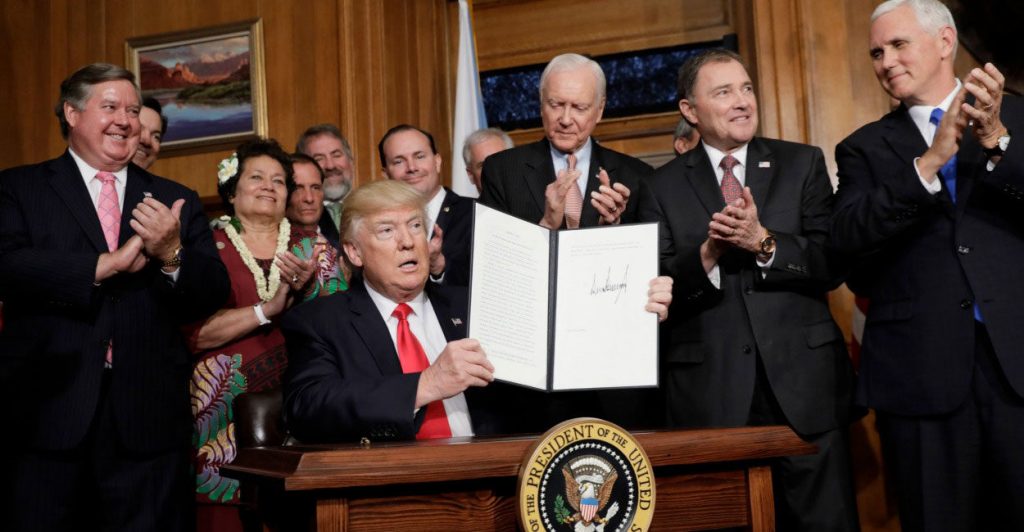
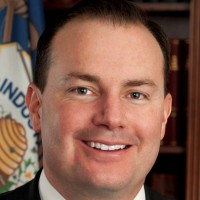
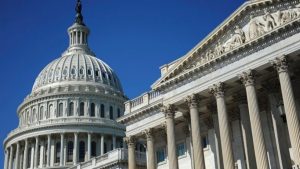 When Neil Gorsuch won long-overdue confirmation this month to serve on the United States Supreme Court, Republicans in turn won control of judiciary. This meant they led all three branches of the federal government – at least the three envisioned by our Founding Fathers – for the first time in a decade.
When Neil Gorsuch won long-overdue confirmation this month to serve on the United States Supreme Court, Republicans in turn won control of judiciary. This meant they led all three branches of the federal government – at least the three envisioned by our Founding Fathers – for the first time in a decade.
 The education problem has been growing in America for decades, as the costs of educating our children skyrocket and students are churned out of the public education system and universities with less and less actual education.
The education problem has been growing in America for decades, as the costs of educating our children skyrocket and students are churned out of the public education system and universities with less and less actual education.
 This will replace the current Student Loan program, which essentially supports a bloated, ineffective higher education system that is little more than a propaganda arm of the global leftist movement. It will also eliminate the current juggernaut of student debt, hanged around the neck of most graduat
This will replace the current Student Loan program, which essentially supports a bloated, ineffective higher education system that is little more than a propaganda arm of the global leftist movement. It will also eliminate the current juggernaut of student debt, hanged around the neck of most graduat A good place to start is President Donald Trump’s executive order, which calls for a review of national monument designations—a tool long used by presidents to unilaterally restrict land use. Also, see our article of November 21, 2016,
A good place to start is President Donald Trump’s executive order, which calls for a review of national monument designations—a tool long used by presidents to unilaterally restrict land use. Also, see our article of November 21, 2016, 
 A U.S. Navy destroyer had another close encounter with an Iranian Revolutionary Guard “fast attack craft” in the Persian Gulf Monday.
A U.S. Navy destroyer had another close encounter with an Iranian Revolutionary Guard “fast attack craft” in the Persian Gulf Monday.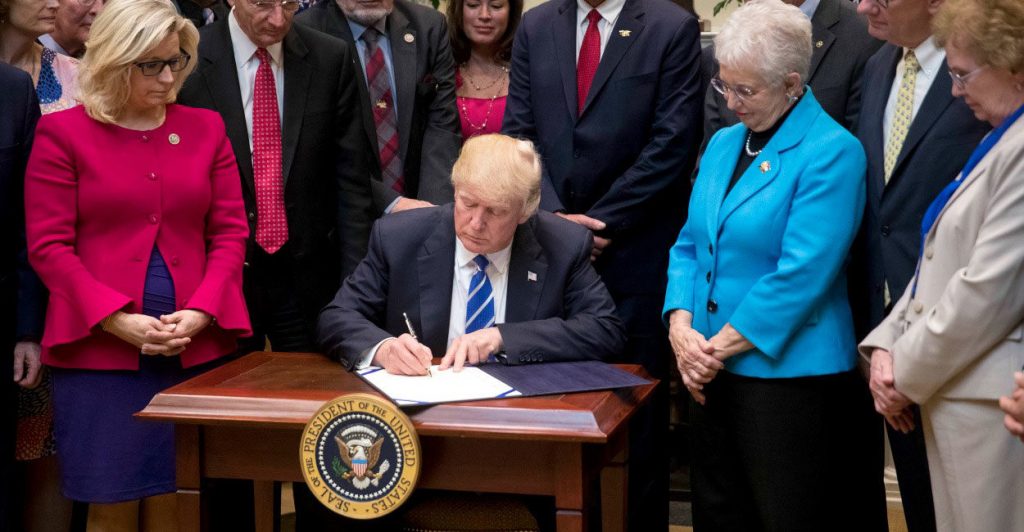
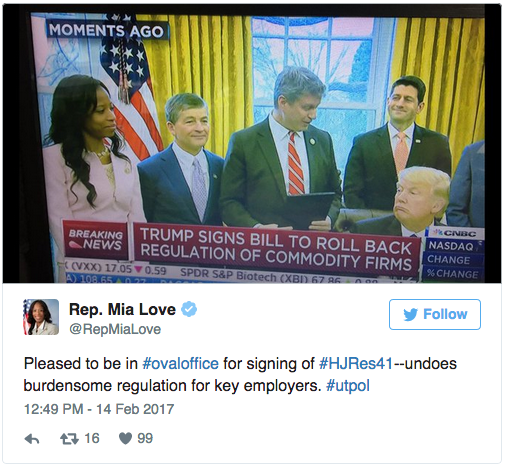
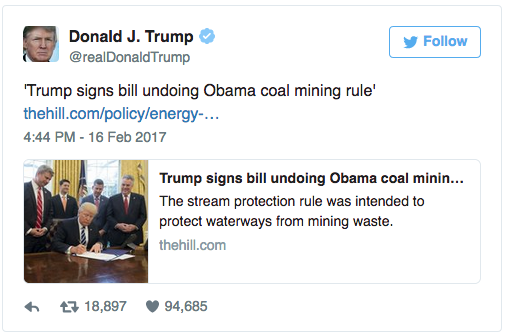
Let’s take a look at past predictions to determine just how much confidence we can have in today’s environmentalists’ predictions.
In 1970, when Earth Day was conceived, the late George Wald, a Nobel laureate biology professor at Harvard University, predicted, “Civilization will end within 15 or 30 years unless immediate action is taken against problems facing mankind.”
Also in 1970, Paul Ehrlich, a Stanford University biologist and best-selling author of “The Population Bomb,” declared that the world’s population would soon outstrip food supplies.
In an article for The Progressive, he predicted, “The death rate will increase until at least 100-200 million people per year will be starving to death during the next 10 years.”
He gave this warning in 1969 to Britain’s Institute of Biology: “If I were a gambler, I would take even money that England will not exist in the year 2000.”
On the first Earth Day, Ehrlich warned, “In 10 years, all important animal life in the sea will be extinct.”
Despite such predictions, Ehrlich has won no fewer than 16 awards, including the 1990 Crafoord Prize, the Royal Swedish Academy of Sciences’ highest award.
In International Wildlife (July 1975), Nigel Calder warned, “The threat of a new ice age must now stand alongside nuclear war as a likely source of wholesale death and misery for mankind.”
In Science News (1975), C.C. Wallen of the World Meteorological Organization is reported as saying, “The cooling since 1940 has been large enough and consistent enough that it will not soon be reversed.”
In 2000, climate researcher David Viner told The Independent, a British newspaper, that within “a few years,” snowfall would become “a very rare and exciting event” in Britain. “Children just aren’t going to know what snow is,” he said. “Snowfalls are now just a thing of the past.”
In the following years, the U.K. saw some of its largest snowfalls and lowest temperatures since records started being kept in 1914.
In 1970, ecologist Kenneth Watt told a Swarthmore College audience:
Also in 1970, Sen. Gaylord Nelson, D-Wis., wrote in Look magazine: “Dr. S. Dillon Ripley, secretary of the Smithsonian (Institution), believes that in 25 years, somewhere between 75 and 80 percent of all the species of living animals will be extinct.”
Scientist Harrison Brown published a chart in Scientific American that year estimating that mankind would run out of copper shortly after 2000. Lead, zinc, tin, gold, and silver were to disappear before 1990.
Erroneous predictions didn’t start with Earth Day.
In 1939, the U.S. Department of the Interior said American oil supplies would last for only another 13 years. In 1949, the secretary of the interior said the end of U.S. oil supplies was in sight.
Having learned nothing from its earlier erroneous claims, in 1974 the U.S. Geological Survey said the U.S. had only a 10-year supply of natural gas.
The fact of the matter, according to the U.S. Energy Information Administration, is that as of 2014, we had 2.47 quadrillion cubic feet of natural gas, which should last about a century.
Hoodwinking Americans is part of the environmentalist agenda. Environmental activist Stephen Schneider told Discover magazine in 1989:
In 1988, then-Sen. Timothy Wirth, D-Colo., said: “We’ve got to … try to ride the global warming issue. Even if the theory of global warming is wrong … we will be doing the right thing anyway in terms of economic policy and environmental policy.”
Americans have paid a steep price for buying into environmental deception and lies.
By Walter E. Williams